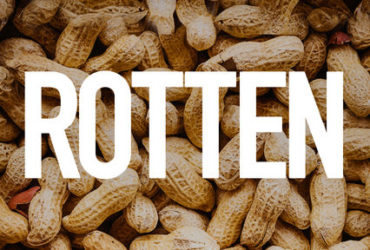BY: PRAVEENA THIRUNATHAN
How many of us have woken up in the middle of the night, hungry for something substantial, yet quick and easy to make? Anything using the oven or stove is out, as is cutting up and assembling a vast variety of delicious ingredients that most of us wouldn’t buy on our student budget. You stumble around in the dark, half awake but acutely aware of the grumbling within your tummy.
Then the wisps of a barely coherent thought gather in your head. You reach for the freezer, opening it to reveal Tupperware of food your roommates have brought from home (and still haven’t shared with you despite your longing for the delicious tastes of their grandma’s perogies). Shuffling the containers around, you reach into the back to pull out a packet of the glorious, almighty: PIZZA POP (or Hot Pockets for all of my friends down south in the U.S.). Right now it’s just a hard shell of pre-cooked dough which encases a blob of tomato sauce, assorted meats and bits of cheese, but in about 2 minutes and 38 seconds, it will become a feast worthy for a queen a queen that has bedhead hair and rumpled PJs.

https://giphy.com/gifs/asian-microwave-pizza-pop-3ohs4vkalS3hHNk68E
You feel your way to the metal box that will make your pizza-filled dreams come true. Jabbing the lower right corner pops open the door to a brightly lit interior stained with mystery sauces from other late night stumblings. As the light blinds your precious eyes, you plop the pizza pops in (after removing them from their plastic wrapper of course) and slam the door shut, press the defrost button, and wait. The whirring starts, the pizza pops rotate, and you bask in the invisible waves emanating from the box. “Ding!”–goes the timer! Out comes the pizza pop, and straight into your mouth it goes: where it simultaneously burns the roof of your mouth and places a still-frozen chunk of cheese on your tongue. The queen is satisfied, albeit with a burnt mouth. And to think that this magical, instantaneous meal was all possible due to a man named Peter Spencer.
History of the Microwave
Let’s travel back in time to the era of WWII. At the end of the war, there was an excess of cavity magnetrons, machines that generated the short-wave radar for the US military. The company Raytheon wanted to find another use for them (so that they wouldn’t go to waste), and thus researchers like Peter Spencer were employed to see if the magnetrons could be repurposed into something new. During the testing of several new magnetrons, Peter noticed that the candy bar in his pocket started to melt. Although other companies such as GE and Westinghouse had been working on microwave technology to cook food (Westinghouse even used a 10-kilowatt radio transmitter to cook steak and potatoes placed between two metal plates!), there hadn’t been much progress. Peter tested the magnetron’s cooking power by using it to popcorn and explode eggs and finally encased it in a metal box to trap the waves. Thus, the first microwave oven was born [1].

Behold, a magnetron! (https://en.wikipedia.org/wiki/File:Magnetron_cutaway_drawing.png)
When you think about it, it’s amazing how we can take such a complex piece of machinery for granted. What had been a heavy, bulky contraption in the 1940s has now become a sleek box that can cook up whatever we desire! But then we come to that burning question which will be the focus of this post: how does it work? The answer lies in the full name: the microwave oven. An oven that uses microwaves to cook food.

We live in amazing times y’all
https://giphy.com/gifs/ad-1970s-microwave-xUOwG6KvcukJRt5Cxy
How Microwaves Work
We cook our food by applying heat, and this heat transfer can occur in many ways: 1) through contact with a hot pan (conduction), 2) by the movement of hot air in an oven (convection), or 3) by microwaving your food (radiation). The microwaves create an alternating electromagnetic field inside the oven, causing the electric dipoles of polar molecules to align with the field. The field rapidly alternates, forcing the molecules to reorient themselves in the changing field. This causes the molecules to vibrate faster, meaning that it generates heat, and the temperature of the material rises [2].
You know what’s a polar molecule? Water!
You also know what’s a common molecule found in foods? Water!
I think you can see where I’m going with this…
The heat generated by the vibrating water molecules in your food is how your pizza pop transforms from an icy block into a soft, delicious treat. While cooking your food in an oven or on the stove exposes only the outside to the heat (and thus the food heats up from the outside towards the center), cooking your food in a microwave heats it throughout the entire mass simultaneously due to the distribution of water throughout the mass.
STOP. HOLD UP. IF MY PIZZA POP IS SUPPOSED TO HEAT UP EVENLY THROUGHOUT THE ENTIRE POP, THEN WHY DO I STILL GET CHUNKS OF FROZEN CHEESE AND BLOBS OF TOMATO LAVA IN THE SAME POP?
Well, this is where we come to the downsides of microwaves.
Here is a gif of an alternating microwave in a microwave oven.

https://giphy.com/gifs/waves-microwave-3ohs4oLRFFQmiv0YAE
Notice how some areas get to experience the peaks and valleys of the wave (the anti-nodes, creating hot spots), while the purple dots are the nodes of the wave and thus are the cold spots. This is why many microwaves have rotating floors, to ensure more even cooking [3]. Alas, there will be times where you’ll still end up with cold chunks inside your pizza pop, especially if there are large pieces of ice in your product. Ice cannot absorb microwaves as well as liquid water and combined with the higher amount of energy needed to melt ice into water, this can contribute to those lingering cold spots in your food [4].
Another downside of microwave oven cooking is that you’re not going to get that lovely, dark brown crust that occurs from Maillard browning. Since microwaves are mainly heating the water in your food, the temperature of your pizza pop won’t really rise past 100C/212F. Maillard browning is more rapid at higher temperatures, like when we’re sauteing onions in a frying pan or roasting a turkey in an oven. You may notice that there are frozen foods being sold with sleeves that have a metallic lining on the inside. The metallic lining heats up to temperatures significantly higher than the water as a way to brown the top of your bistro pocket. Not as ideal as your oven but at least you get hot food with slight browning in under 3 minutes [5].
WAIT I THOUGHT YOU CAN’T PUT METAL IN THE MICROWAVE OTHERWISE IT’LL BLOWUP. WHAT’S THIS METALLIC LINING BUSINESS?
Well, you’re right, if you leave your fork in your bowl of pasta when you microwave it, you’ll probably ruin your microwave. Since metal conducts electricity well, electrons will pile up on the edges of any pointy parts of your metal (like for example, the tines of a fork). The buildup results in arcs of electricity between the tines (and subsequently the death of your microwave). Food manufacturers know this and that’s why they produce those crisper packets with only a small amount of aluminum for maximum browning and minimal fires [6]. Those crisper packets contain a smooth and flat sheet of aluminum foil encased in a cardboard sleeve so that there are no exposed edges or crinkles in the foil for electrons to gather and create sparks. As long as you heat up your food for the recommended amount of time, you’ll keep your oven and your food safe and free from incineration [6].

https://giphy.com/gifs/funny-fire-microwave-OqDXby6tnVv5Tg4ZfL
(For those of you who get excited by setting things on fire, you can make a plasma ball in your own microwave just from a grape cut in half! We at Science meets Food and IFT do not endorse any behavior that may cause the loss of your life, home, and microwave. Link to video)

https://giphy.com/gifs/life-real-over-as2mwROqCINz2
Microwaves have also been used in research as a method to prepare samples for chromatographic analysis. Typically, researchers would have to use various methods of extraction (like pouring boiling petroleum ether over the sample or shaking the sample in methanol) in order to separate out the desired compounds into the solvent. These methods can use up a lot of resources and are time-consuming. Researchers like Ganzler et al found that microwave irradiation of food and feed samples in a small amount of methanol, for seven cycles of 30 seconds, led to a higher yield of polar compounds from the sample than traditional Soxhlet extraction [7]. Not only can food chemists speed up their analyses, having a greater yield of their desired compound also leads to more accurate results. Microwave extraction has also been successfully used to extract bioactive compounds such as phenolics and flavonoid compounds, from the pulp and peels of processed fruits and vegetables [8]. Like with Ganzler et al., the extraction procedure involves putting the pulp/peels/seeds into a small amount of solvent and microwaving it for several short bursts of time. This opens up the potential to take food waste and reuse it into a source of nutritional potential, by extracting out the bioactive compounds to fortify our food (and in my opinion, the more we can reduce food waste, the better it is for our economy and our environment).
Conclusion
The microwave is an extraordinary, small box that can transform your frozen dinners into tasty meals in minutes, and now you know a little more about how a microwave works. While the process of microwaving food may still seem incredible, or even dangerous, the microwave oven has been proven to be safe for decades [9]. Don’t worry if skeptics say that microwaves create radiation in food or give you cancer; microwaves do little more than cause vibrations in your food to heat things up and there’s no evidence that microwaved food can harm you. So with that in mind, maybe the microwave isn’t that magical anymore.
Actually never mind I found out that you can make MUG CAKES IN A MICROWAVE!!!
I TAKE MY WORDS BACK THE MICROWAVE IS MAGICAL. Here’s a recipe for a delicious mug cake so you can also taste the magic!

https://giphy.com/gifs/dessert-J7GI5QzYq9y3C
References
-
Ackerman, Evan. 2016. “A Brief History of the Microwave Oven – Where the ‘Radar’ in Raytheon’s Radarange Came from.” Spectrum IEEE (blog). September 30, 2016. https://spectrum.ieee.org/tech-history/space-age/a-brief-history-of-the-microwave-oven.
-
“Q & A: How Do Microwaves Work?” 2011. Physics Questions? Ask the Van (blog). November 3, 2011. https://van.physics.illinois.edu/qa/listing.php?id=821.
-
Foley, Alexandra. n.d. “Why Does a Microwave Heat Food Unevenly?” COMSOL Multiphysics© (blog). Accessed February 12, 2018. https://www.comsol.com/blogs/why-does-a-microwave-heat-food-unevenly/.
-
Chaplin, Martin. 2017. “Water and Microwaves.” Water Structure and Science. November 6, 2017. http://www1.lsbu.ac.uk/water/microwave_water.html.
-
Jaeger, H., A. Janositz, and D. Knorr. 2010. “The Maillard Reaction and Its Control during Food Processing. The Potential of Emerging Technologies.” Pathologie-Biologie 58 (3): 207–13. https://doi.org/10.1016/j.patbio.2009.09.016.
-
“MIT School of Engineering | » Why Can’t We Put Metal Objects in a Microwave?” n.d. Mit Engineering (blog). Accessed February 12, 2018. https://engineering.mit.edu/engage/ask-an-engineer/why-cant-we-put-metal-objects-in-a-microwave/.
-
Ganzler, Katalin, András Salgó, and Klára Valkó. 1986. “Microwave Extraction.” Journal of Chromatography A 371: 299–306. https://doi.org/10.1016/S0021-9673(01)94714-4.
-
Routray, Winny, and Valérie Orsat. 2012. “Microwave-Assisted Extraction of Flavonoids: A Review.” Food and Bioprocess Technology 5 (2): 409–24. https://doi.org/10.1007/s11947-011-0573-z.
-
“Microwave Ovens Do Not Cause Cancer.” 2014. Cancer Council NSW. January 15, 2014. https://www.cancercouncil.com.au/86089/cancer-information/general-information-cancer-information/cancer-questions-myths/environmental-and-occupational-carcinogens/microwave-ovens-do-not-cause-cancer/.






How good is an article, by the way, microwave technology can also play a big role in industry.
Hello,
Thanks for sharing such wonderful information with us very interesting and informative very helpful keep up the good work.